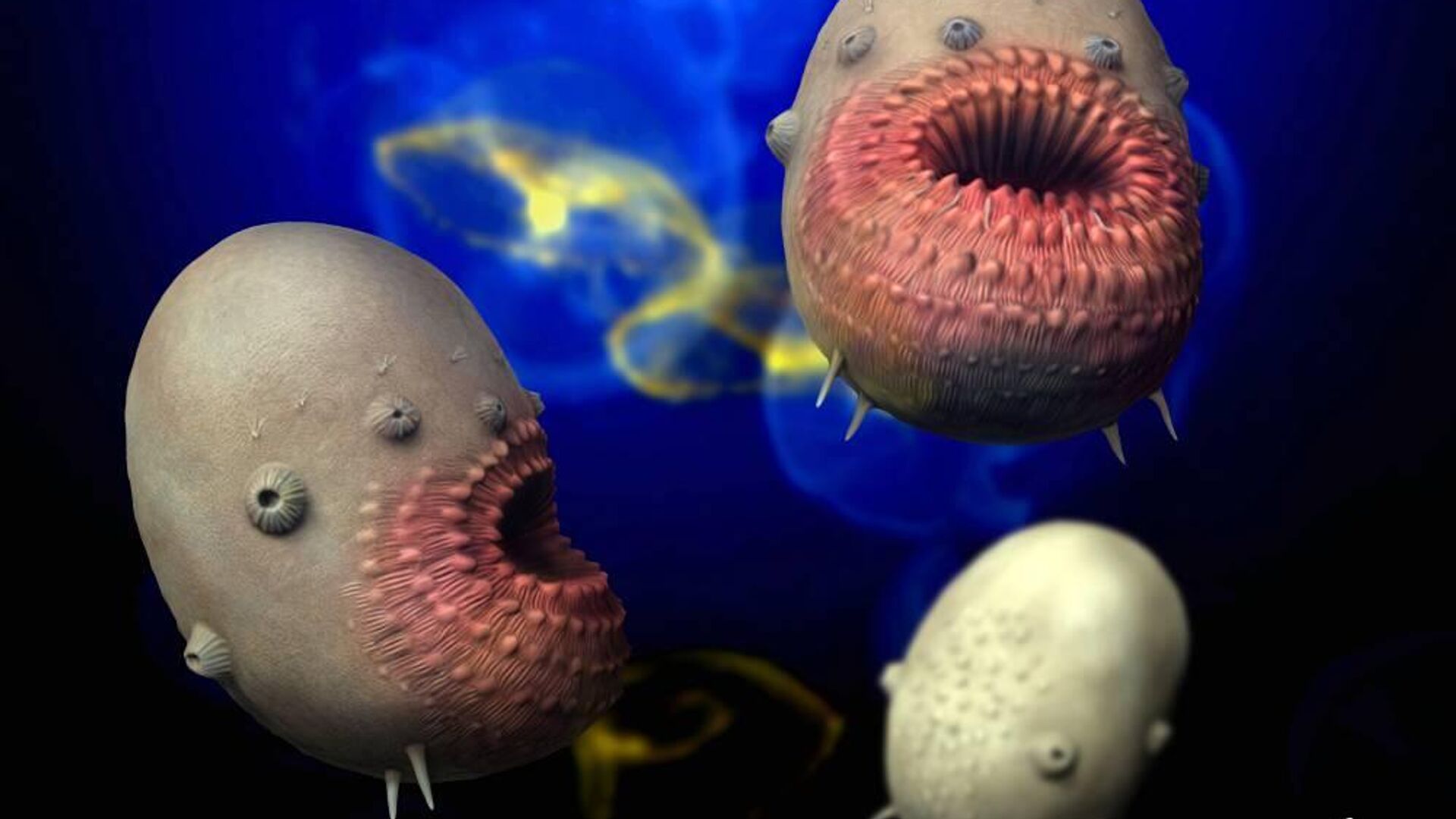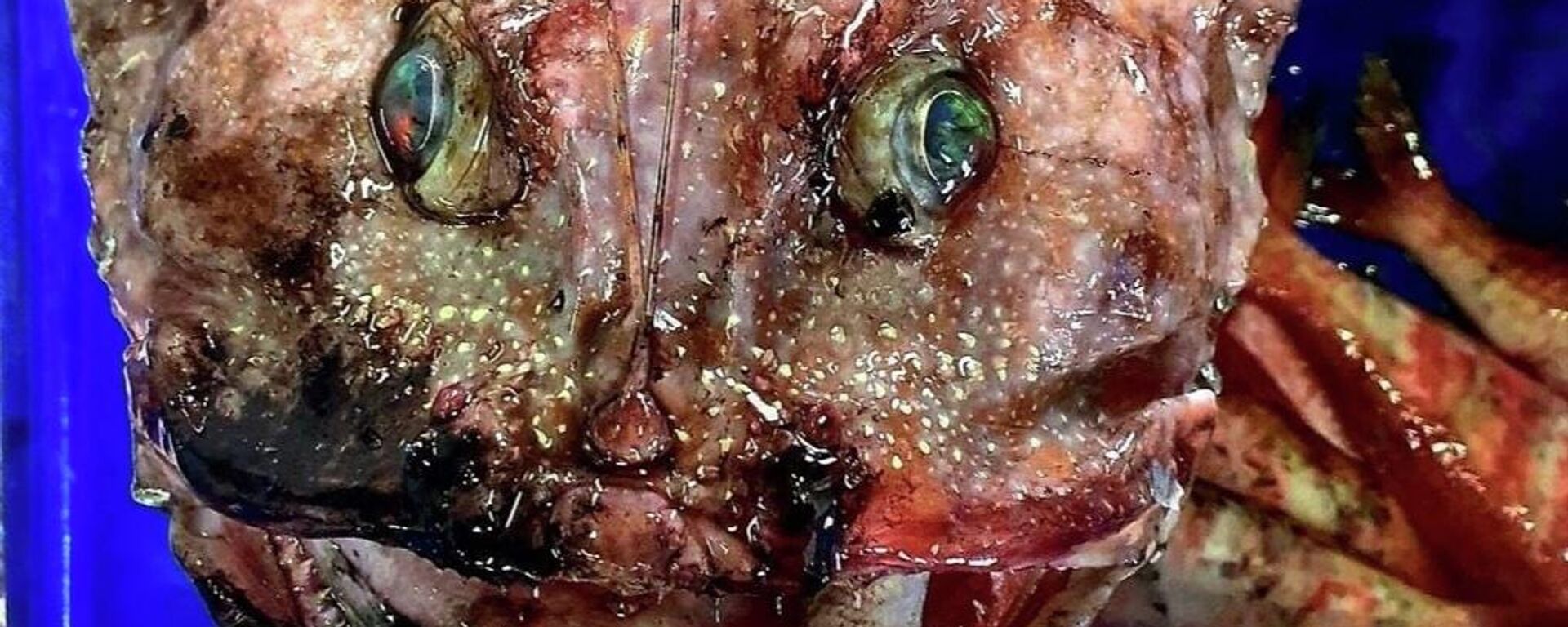https://sputnikglobe.com/20220818/scientists-unveil-mystery-surrounding-500-million-year-old-critter-without-anus-1099739246.html
Scientists Unveil Mystery Surrounding 500 Million-Year-Old Critter Without Anus
Scientists Unveil Mystery Surrounding 500 Million-Year-Old Critter Without Anus
Sputnik International
The mysterious critter was initially assigned to a category of animals that normally don’t possess an anus after the researchers could not find one. But, as it... 18.08.2022, Sputnik International
2022-08-18T17:20+0000
2022-08-18T17:20+0000
2022-08-18T17:20+0000
science & tech
paleontology
discovery
https://cdn1.img.sputnikglobe.com/img/07e6/08/12/1099739094_0:94:1000:657_1920x0_80_0_0_d477933e9be8a775cbcdea6b4395762f.jpg
Researchers from China and the UK have solved the mystery surrounding Saccorhytus coronaries – a millimeter-long spiny creature that was found in 2017 and believed to have inhabited oceans 500 million years ago. The veil of mystery over the critter persisted for years, as the scientists could not locate the creature’s anus. Turns out – they should not have even tried.The critter was originally determined to be a member of a deuterostomes group of animals - the ancestors to the modern vertebrates (including humans). However, scientists' latest research suggests that it actually belongs to another group called ecdysozoans – the predecessors of the modern spiders and various insects. As it turned out, the whole mishap happened over the creature's anus – or rather lack thereof.Ecdysozoans normally have an anus and hence the critter was initially ruled not to belong to them. But, upon closer discovery using x-rays, scientists saw it resembles ecdysozoans internally more than the ancestors of the vertebrates.Like them, Saccorhytus has a large mouth and also features tiny holes around it that served as bases for spines that kept the critter anchored in one place. Those holes also served as a source of confusion as they were originally believed to be gills – another mark of the proto-vertebrates.As to Saccorhytus' absence of anus, scientists are yet to find out what happened to it. One theory suggests that there was an even earlier representative of ecdysozoans that has not been discovered, but did not have an anus.Another theory goes that Saccorhytus did not actually need one.
https://sputnikglobe.com/20220629/ugliest-ive-ever-seen-fisherman-shares-pic-of-mysterious-creature-he-found-in-australia-1096793393.html
Sputnik International
feedback@sputniknews.com
+74956456601
MIA „Rossiya Segodnya“
2022
Tim Korso
https://cdn1.img.sputnikglobe.com/img/07e6/03/0d/1093831826_0:0:216:216_100x100_80_0_0_e3f43a960af0c6c99f7eb8ccbf5f812c.jpg
Tim Korso
https://cdn1.img.sputnikglobe.com/img/07e6/03/0d/1093831826_0:0:216:216_100x100_80_0_0_e3f43a960af0c6c99f7eb8ccbf5f812c.jpg
News
en_EN
Sputnik International
feedback@sputniknews.com
+74956456601
MIA „Rossiya Segodnya“
Sputnik International
feedback@sputniknews.com
+74956456601
MIA „Rossiya Segodnya“
Tim Korso
https://cdn1.img.sputnikglobe.com/img/07e6/03/0d/1093831826_0:0:216:216_100x100_80_0_0_e3f43a960af0c6c99f7eb8ccbf5f812c.jpg
science & tech, paleontology, discovery
science & tech, paleontology, discovery
Scientists Unveil Mystery Surrounding 500 Million-Year-Old Critter Without Anus
The mysterious critter was initially assigned to a category of animals that normally don’t possess an anus after the researchers could not find one. But, as it turns out, the scientists where deeply mislead about its nature and origins.
Researchers from China and the UK have solved the mystery surrounding Saccorhytus coronaries – a millimeter-long
spiny creature that was found in 2017 and believed to have inhabited oceans 500 million years ago. The veil of mystery over the critter persisted for years, as the scientists could not locate the creature’s anus. Turns out – they should not have even tried.
The critter was originally determined to be a member of a deuterostomes group of animals - the ancestors to the modern vertebrates (including humans). However, scientists' latest research suggests that it actually belongs to another group called ecdysozoans – the predecessors of the modern spiders and various insects. As it turned out, the whole mishap happened over the creature's anus – or rather lack thereof.
Ecdysozoans normally have an anus and hence the critter was initially ruled not to belong to them. But, upon closer discovery using x-rays, scientists saw it resembles ecdysozoans internally more than the ancestors of the vertebrates.
Like them, Saccorhytus has a large mouth and also features tiny holes around it that served as bases for spines that kept the critter anchored in one place. Those holes also served as a source of confusion as they were originally believed to be gills – another mark of the proto-vertebrates.
As to Saccorhytus' absence of anus, scientists are yet to find out what happened to it. One theory suggests that there was an even earlier representative of ecdysozoans that has not been discovered, but did not have an anus.
Another theory goes that Saccorhytus did not actually need one.
"It could be that it lost it during its own evolution - perhaps it didn't need one because it could just sit in one spot with one opening for everything," Emily Carlisle, one of the researchers, said.



